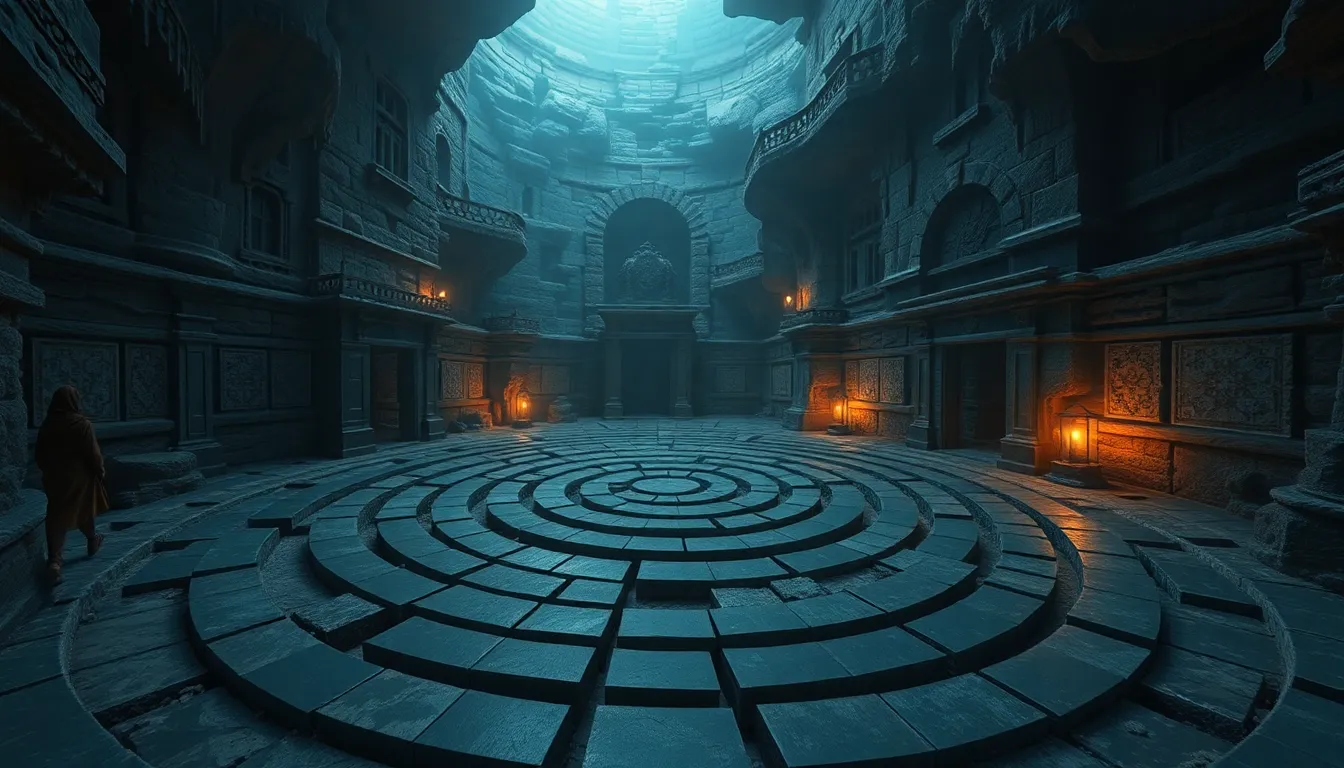The Myth of Apsu and Tiamat: Chaos and Order in Mesopotamian Cosmology
1. Introduction:
The Mesopotamian creation myth, found on clay tablets dating back to the 18th century BC, offers a fascinating glimpse into the ancient worldview. It describes the genesis of the universe from a primordial chaos, personified by the gods Apsu and Tiamat, to the establishment of order and the creation of humanity.
Apsu, the freshwater god, and Tiamat, the saltwater goddess, embody the undifferentiated primordial chaos. They are the source of all existence, but their union is also characterized by instability and conflict.
2. The Primordial Waters: Apsu and Tiamat
Apsu and Tiamat represent the undifferentiated primordial chaos, the swirling mass of water that existed before the creation of the universe. Apsu, the freshwater god, embodies the life-giving force of freshwater, while Tiamat, the saltwater goddess, embodies the vast and unpredictable depths of the sea.
Their union is both creative and destructive. It gives birth to the younger gods, but it also disrupts the primordial peace. The younger gods, with their vitality and dynamism, threaten the stability of Apsu and Tiamat's primordial realm.
3. The Birth of the Gods:
From the union of Apsu and Tiamat, the younger gods are born. These gods, including Ea (the god of wisdom), Anu (the sky god), and Enlil (the air god), represent the forces of order and creation.
Their birth disrupts the primordial peace. The younger gods are vibrant and active, and their activities disturb the stillness of Apsu and Tiamat's realm. This disruption leads to conflict and ultimately to the creation of the universe.
4. Apsu's Plan and Murder:
Apsu, fearing the power and disruption of the younger gods, plots to destroy them. He seeks to return to the primordial chaos, a state of undifferentiated unity.
However, Ea, the god of wisdom, learns of Apsu's plan and murders him. This act of violence is a necessary step in the creation of the universe, as it allows the younger gods to establish order and create the world as we know it.
5. Tiamat's Rage and the Battle:
Tiamat, enraged by the murder of her consort, Apsu, vows revenge. She gathers monstrous allies, including dragons, serpents, and demons, to fight the younger gods.
This epic battle represents the clash between chaos and order, between the primordial state and the newly created universe. The outcome of this battle will determine the fate of the world.
6. The Champion: Marduk
The younger gods, recognizing the immense threat posed by Tiamat and her monstrous allies, choose Marduk, the god of storms and war, as their champion. Marduk is a powerful and ambitious god, possessing the cunning of Ea, the strength of Enlil, and the wisdom of Anu. He is armed with lightning bolts, a divine net, and a ferocious windstorm, all bestowed upon him by the other gods.
7. The Epic Battle
The epic battle between Marduk and Tiamat is described in vivid detail in the Enuma Elish. Marduk charges into battle with his divine weapons, unleashing his powerful windstorm to disorientate Tiamat. He then casts his net over her, trapping her within its confines. Finally, Marduk delivers the final blow, splitting Tiamat's body in two with his lightning bolts.
8. Creation from Chaos
With Tiamat defeated, Marduk uses her body to create the heavens and the earth. He splits her upper half to form the sky, while her lower half becomes the earth. From her eyes, flow the Tigris and Euphrates rivers, and from her blood, Marduk creates humankind. This act symbolizes the transformation of primordial chaos into a structured and ordered universe.
9. The Significance of the Myth
The myth of Apsu and Tiamat offers profound insights into the Mesopotamian worldview. It reflects their belief in the cyclical nature of creation and destruction, where chaos and order are constantly in flux. The myth also emphasizes the crucial role of conflict in the establishment of order and the creation of the universe. The victory of Marduk over Tiamat signifies the triumph of order over chaos, a theme that resonated deeply with the Mesopotamians
10. Conclusion
The myth of Apsu and Tiamat is a captivating tale that illuminates the Mesopotamian understanding of the universe and its origins. It portrays a world emerging from primordial chaos through a series of dramatic conflicts, ultimately culminating in the creation of humanity. This myth continues to captivate modern audiences, offering invaluable insights into the ancient Mesopotamian worldview and their profound understanding of the human condition.
FAQ
Who are Apsu and Tiamat?
Apsu and Tiamat are primordial deities in Mesopotamian mythology, representing the freshwater and saltwater respectively. They personify the undifferentiated chaos that existed before the creation of the universe.
What is the significance of the battle between Marduk and Tiamat?
The battle between Marduk and Tiamat symbolizes the triumph of order over chaos, a central theme in Mesopotamian cosmology. Marduk's victory establishes the foundation for the creation of the universe and the establishment of human civilization.
What is the role of humanity in the myth?
Humanity is created from the blood of Tiamat, signifying their connection to the primordial chaos and their role in maintaining order within the created world.
What are the key takeaways from the myth?
The myth of Apsu and Tiamat emphasizes the cyclical nature of creation and destruction, the importance of conflict in establishing order, and the connection between humanity and the primordial chaos.



